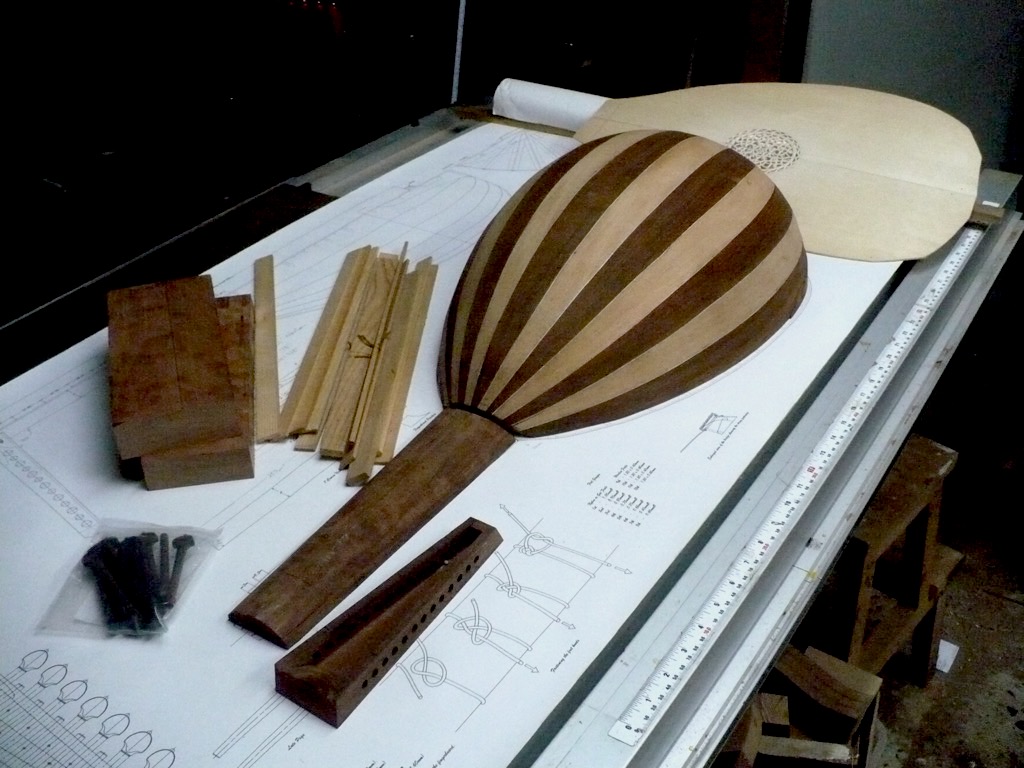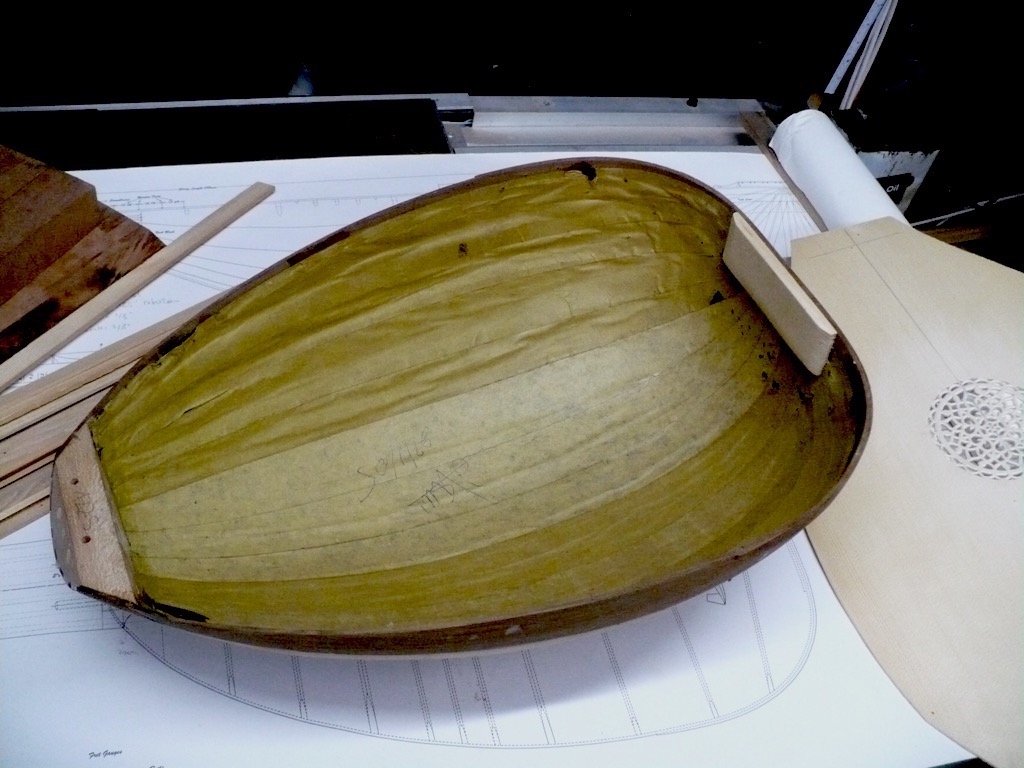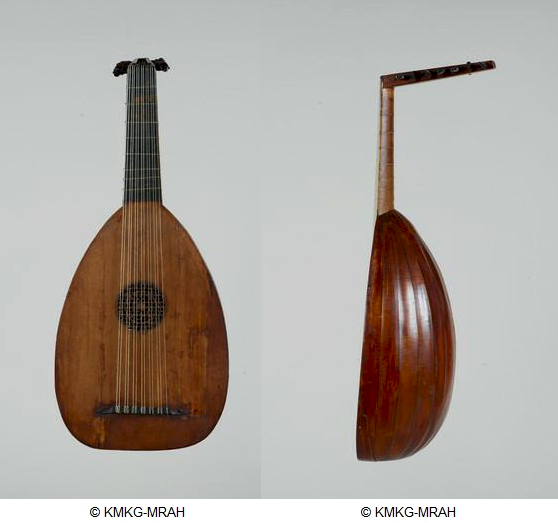7c Introduction
–
What are we doing?
I’m going to use this blog as ground-zero in my attempt to build, and in some places rebuild, an old EMS 7c lute kit.

That is not it, however it does give a good idea of the kind of lute we are about to attempt to build: a simple working instrument of the mid- to late-16th Century.
Background
A number of years ago I came into possession of an Early Music Shop seven-course lute kit, a project I have been either unable or unwilling to take on until now.
Please note that these kits still exist and are available for purchase from the EMS but the one I’ll be using is an earlier model. As they state in their blurb:
An important design improvement is that the kit is supplied with a completely pre-assembled shell, which overcomes the frustrations that many kit builders found with our previous lute kits. Each part is carefully shaped ready for assembly, with only limited hand skills required.
Okay. Be that as it may, the particular kit I have is not quite “ready for assembly.” In fact, from my perspective, not even close.
The Kit
Here’s what we’re working with:

That’s it (except for the two blocks, but we’ll get to those later). So what we see here are a constructed shell, a soundboard with a carved rose, a semi-formed neck and pegbox, some turned pegs, and a collection of timbers we’ll use for braces and the like.
Here’s what the interior of the shell looks like:

yup, all covered in paper, signed with a squiggle and dated “27/01/05” (the paper is used to provide integrity to the shell which is otherwise supported only by the edge gluing). There is also the plan and a book of instructions (not shown).
The Good and the Bad
Over the years I’ve learned some stuff, including a little lutherie, which means I’m now looking at this kit with slightly different eyes than I did years ago. On the whole, were I to follow the instructions and use the materials I have been supplied, I’d end up with a mostly okay lute. I want better than “mostly okay” which means there are a few things that are going to change.
First though, let’s take a look at original, the model from which this kit was taken. This instrument, known as the Hieber lute is found in the collection of the Musée des Instruments de Musique in Brussels (Inv. 1561) and it looks like this:

Technically speaking, this is a lute of the Füssen School, who were operating in the Veneto region around the end of the 16th century. They were famed in their day as the makers of the finest lutes and their names–Magno Dieffopruchar, Vvendelio Venere, Michael Harton, and Giovanni Hieber–provide a who’s-who of the models modern luthiers base their most popular models. The Hieber in Brussels is probably from around 1580 and is the only surviving 7c we have (the rest were mostly converted for Baroque use later in their lives).
Now, when we compare the build dimensions of the true Hieber with the kit, we find a few discrepancies and, to cut to the chase, I’m going to attempt to make the kit more like the original. In order to do that, I’ll be:
- thinning the shell,
- adding a belly scoop,
- making a new neck and pegbox,
- nailing the neck to the block,
- moving to a 6-bar pattern on the sound board,
- using hide glue throughout.
Aside from that, it’ll be plain sailing! However, like all good sailors, we’ll take along an experienced sea-dog. In our case it’ll be the wonderful Vancouver-based luthier, Travis Carey. I’ve know Travis for a few years now (I lived nearby in Victoria, BC, and Travis has rebuilt one of my lutes and built, for me, the swan-necked Baroque lute he is holding in his bio pic) and he has offered to help me via email when I’m stuck! Hooray! Not quite like show-and-tell but pretty good.
So enough blather for now, and on with the work!
